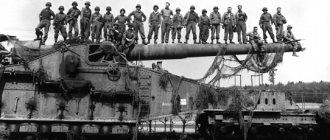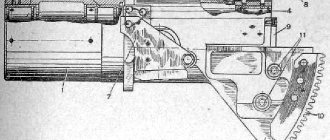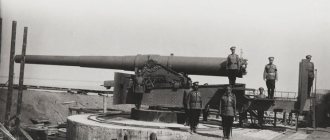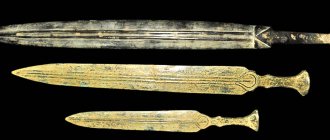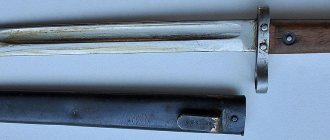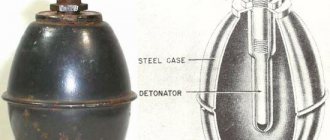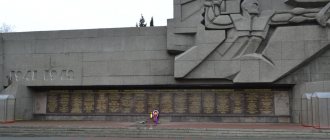The liberation of Crimea and Sevastopol in April-May 1944 was one of the most important battles of the Great Patriotic War: the Soviet Union defeated the 200,000-strong German-Romanian group and regained control of the Black Sea. The last city on the peninsula to be liberated was Sevastopol, on May 9. But on May 10, 1944, Moscow saluted the soldiers, sailors and officers of the 4th Ukrainian Front and the Primorsky Army also because this victory was symbolic: the liberators regained places that had always been and will be associated with the military glory of Russia. Lenta.ru recalls how the Crimean offensive operation took place.
Kerch landing
The Red Army made attempts to enter Crimea on the move until 1944. In the fall of 1943, troops of the North Caucasus Front liberated the Taman Peninsula. The Supreme High Command set the task of seizing a bridgehead on the Kerch Peninsula. In early November, ships of the Black Sea Fleet and the Azov Military Flotilla landed units of the 18th and 56th armies on the eastern outskirts of Crimea - soldiers and officers were transported on torpedo boats, longboats and fishing schooners. Soviet troops drove the Germans out of a small piece of land - from the edge of the coast to the outskirts of Kerch. The paratroopers held out on this bridgehead until the beginning of April, when the Crimean offensive operation began. By that time, the troops of the 4th Ukrainian Front had already occupied a bridgehead in the north of Crimea. Back in November 1943, they crossed the Sivash and made their way to Armyansk on the Perekop Isthmus.
“With the advance of our troops to the lower reaches of the Dnieper, to the Perekop Isthmus, to Sivash and with the simultaneous capture of a bridgehead on the Kerch Peninsula, the enemy group (17th German Army and a number of Romanian formations), defending in the Crimea, found itself blocked and cut off from the rest of the enemy’s ground forces “Marshal Alexander Vasilevsky, who then held the post of Chief of the General Staff, described the situation on the peninsula before the start of the Soviet offensive in his memoirs.
The defending Germans numbered about 200 thousand, with 3,600 guns and mortars, 215 tanks and assault guns and 150 aircraft. The strike force of the Red Army consisted of 470 thousand people, a little less than 6 thousand guns and mortars, more than 500 tanks and self-propelled artillery mounts, and 1,250 aircraft.
Soviet artillerymen fire at the enemy in the battle for the city of Kerch
Photo: TASS
Results of the operation to liberate Crimea
Moscow saluted the liberators of Crimea and Sevastopol on May 10. The Crimean operation ended completely on May 12.
The deadlines for achieving the goals speak eloquently for themselves. It took only 35 days to defeat the enemy in 1944, although the Nazis were forced to besiege Sevastopol for 250 days in 1941-1942.
During the offensive, our losses in manpower amounted to more than 17.7 thousand people killed and about 65.1 thousand wounded. The enemy troops lost about 100 thousand people. Of these, about two thirds were captured.
After the victory over the enemy on the Crimean Peninsula, the danger of a strike to the rear by the advancing Soviet units was finally eliminated. It was possible to return control of Sevastopol, a strategically important base for ships of the Black Sea Fleet. And finally, good conditions were formed for striking the Nazis in the Balkans.
Behind enemy lines
According to the plans of the Soviet command, the offensive was supposed to begin simultaneously from the north - with the forces of the 4th Ukrainian Front, and from the east, from the bridgehead on the Kerch Peninsula - by units of the separate Primorsky Army (the former 56th Army). The goal of the operation was to fragment the German-Romanian group and destroy it, preventing it from evacuating from the peninsula. Vasilevsky explained that the Soviet command decided to deliver the main blow from positions beyond Sivash, hoping to take the enemy by surprise. “In addition, the blow from Sivash, if successful, would bring our troops to the rear of all enemy fortifications on Perekop, and therefore allow us to break out into the vast expanses of Crimea much faster,” the marshal detailed in his memoirs.
The 4th Ukrainian Front, advancing from the north, was supposed to liberate Dzhankoy, and then attack in the direction of Simferopol. The separate Primorsky Army was tasked with attacking from the east on Simferopol and Sevastopol, and with part of its forces along the southern coast of the Crimean Peninsula.
Due to bad weather and storms in the Sea of Azov, the start of the operation was postponed. Finally, on April 8, after artillery preparation, the Red Army went on the offensive; A few days later, Soviet units reached the flank of a group of German troops at Perekop and took Dzhankoy. To avoid encirclement, parts of the Wehrmacht began to roll back. The fears of the Soviet command that the Wehrmacht would use the mountainous terrain of the peninsula for a stubborn defense were not confirmed: in general, the operation developed as planned.
German prisoners of war captured during the landing operation on the Kerch Peninsula
Photo: Evgeny Khaldey / RIA Novosti
At the same time, the Separate Primorsky Army was advancing through Karasubazar (Belogorsk - approx. "Lenta.ru"
) and Feodosia to Sevastopol. On April 13, Soviet troops liberated Yevpatoria, Simferopol and Feodosia; by April 16, the Wehrmacht was driven out of Bakhchisarai, Alushta and Yalta.
“The Red Army was strong in armored vehicles, and its command chose the direction of attack on tank-accessible terrain - along the Yalta Highway. The Germans abandoned this tactic in 1942 because they had more artillery and fewer tanks and feared the impact of the Black Sea Fleet shelling Soviet ships. In general, the Black Sea Fleet operated according to the principle of fleet on being, as the British say - it was in action, it pinned down the enemy’s forces: having superiority at sea, the Soviet command could strike where it was convenient for them,” says military historian, candidate of historical sciences Alexey Isaev.
Crimean operation: How the US and NATO were fooled
Five years ago in Crimea it was about more than control over the peninsula. It was about control over the future. Including the future of the whole world
From a military point of view, the operation to ensure peace and tranquility in Crimea is recognized as brilliant even by our strategic opponents. And even after an equally brilliant operation to suppress the victory of terrorism in Syria.
From a political point of view, both were brilliant operations to suppress Western projects in these regions. In Syria - to eliminate Western terrorism, a particular instrument of which is Islamic terrorism. In Crimea... But in Crimea it was about much more.
Crimea as part of geopolitics
As a strategic object, Crimea has two forms. As a piece of land protruding into the Black Sea, it allows you to control almost the entire sea. And we are not talking so much about modern missiles. Even in ancient times, it was the “middle land”, from which the shortest routes to any Black Sea coast ran. Whoever owns Crimea owns the Black Sea.
On the other hand, whoever owns Crimea receives instant and effective, like a bayonet strike, control over fundamentally important regions of Russia. This, of course, is the entire steppe Tavria, right up to Zaporozhye. This, of course, is Odessa and further up to the Danube. This is, finally, Taman, and with it the North Caucasus. But the main thing is that the possession of Crimea makes no sense from a strategic point of view, the possession of Novorossiysk. That is, it excludes the presence of an alternative independent maritime power in the region if this contradicts the will of the one who owns Crimea. Which, by the way, was shown by the Germans when, having occupied Crimea, and then, naturally, Novorossiysk, they practically excluded the Black Sea Fleet from the list of active roles in the region.
How to develop the advantages arising from such a geostrategic configuration is an ambitious but secondary matter. The Tatars once reached Moscow...
What were we talking about with the Maidan tools?
Photo: www.globallookpress.com
To put it briefly and without repeating what has already been written, the scheme was simple. The Nazis should act as a striking instrument for an urgent change of power in Kyiv, a kind of battering ram. And not so much scumbags from nationalist Ukrainian organizations, but ideological guys at the political level. The Turchinovs, Parubiys and others, whose father was either repressed for participating in the burning of a village with all its inhabitants, or whose uncle guarded a concentration camp, or whose dear grandfather was hit with a grenade right in the cache and licked.
The results of the Nazi strike actions were to be taken advantage of by the pro-Western oligarchic structures of Ukraine, whose goal was to change the regime and legislation for a small bribe so that, firstly, Ukrainian resources could be seized by Western transnational corporations, and secondly, so that the American military would receive at least Crimea, and, at best, the entire territory of Ukraine. Simply put, they gained control of the underbelly of Russia.
What are transnational Western corporations? This is both an instrument of enrichment and an instrument of control over humanity of the supra-world financial international. And the same American military is nothing more than a club for the disobedient in their hands.
It was Ukraine, captured by the Nazis, that was to become the club under the solar plexus of rebellious Russia.
But she didn’t. "Polite people" interfered
Crimea. March 2014 Photo: photo.ua / Shutterstock.com
In reality, of course, it was not “polite people” who interfered. More precisely, they could interfere. And they had very serious operational military capabilities for this. Which, for example, was later shown in Syria.
More can be said. Most likely, given the geostrategic role that Crimea objectively plays, Russia would not leave the peninsula under any circumstances. If necessary, she would take military action for him. There are simply conditions when there is nothing else left. But in this case, several factors arose at once, thanks to which things did not come to war.
The first of them is the actions of the people of Crimea. To say that a pro-Russian population lives there is to say nothing. To say everything is to say that during the 25 years of existence under Independent Nationalist Ukraine, Crimean schools managed to teach children real history, and not the one where Mazepa defeated Peter I, defending Bandera’s right to freely dig up the Black Sea. So the people of Crimea rebelled, not intending to submit to the last children of Bandera and Mazepa.
The second is that the Westerners were in a hurry. It was more logical for them to hold out until December 2014, when any of their proteges were guaranteed to win the elections of the hated Viktor Yanukovych. But international banksters were really afraid that in the coming year Putin would find some kind of move that would guarantee Kyiv’s control or, at least, control over Crimea.
The third is that Russia already had “polite people” by this time...
Polite but firm
Crimea. Militia. March 2014 Photo: Alexander Chizhenok / Shutterstock.com
Yes, the first role was played by militias, volunteers and Cossacks. It was they who did not allow the Nazis into Crimea, they blocked key points, they propagandized the Ukrainian military. But if “polite people” had not then appeared, then - today this is a common belief - there would have been something very similar to Donbass in Crimea.
Crimea. From past to future
But how and where these “polite people” came from in Crimea is the subject of horror and admiration in the West.
Firstly, no one - except those involved, of course - still knows when they appeared in Crimea. Someone is talking about February 26, when they clearly showed themselves during the operation to establish control over the building of the Supreme Council in Simferopol. Someone - about February 25, when the fact of the delivery of the first units of “polite” on board the ship “Nikolai Filchenkov” was recorded. Some even talk about February 23, when no special movements of Russian troops were recorded in Crimea, but someone somewhere saw someone transferred from Russia.
But the fact is clear: unknown armed people actually took over control of important facilities from the militias and Cossacks on the night of February 27, and Western military analysts still shrug their shoulders in their reports: these forces spent less than a day blocking Ukrainian key facilities and military units, They didn’t fire a single shot, but they didn’t give the enemy a single chance to resist.
Photo: Alexander Chizhenok / Shutterstock.com
Secondly, no one understood where they came from, “polite people.” Some planes were flying, yes. But Western intelligence has not revealed which ones and why. Western intelligence - this needs to be underlined with three bold lines, circled in a red rectangle and three exclamation marks in the margin! — did not reveal the transfer of military contingents to Crimea at all! Not just significant ones - none at all!
Thirdly, the actions of this contingent were surprisingly effective. Forty thousand Ukrainian military personnel on the territory of the peninsula with hundreds of armored vehicles did not see a single chance for resistance. Or they didn’t want to see it - but from a military point of view it’s the same thing: the result is the same. And the result was such that before the eyes of the world, which didn’t even have time to be surprised—and NATO! NATO! — unknown people in military uniform without identification marks instantly captured all strategic objects in Crimea!
How about in England? Or somewhere else? By the way, after a year and a half in Syria, the Russians showed up in the same way: they were not there, and all the “good” people around rejoiced at the victories of the terrorists over the anti-people Assad regime - and now the Russians are already here, and the whole Bankster scheme for yet another capture of another point on the planet is going to hell ...
Fourthly, everything was done so without alternative that the meme about “polite” simply could not help but arise. Well, take a look for yourself. Okay Supreme Council! But on the night of February 27, 2014, at the same time, without a single act of violence, the security of the Council of Ministers building was disarmed. The headquarters of the Ukrainian Navy is blocked, the commander is detained, the arsenal of the headquarters is taken under control and even taken away. The reserve air defense command post of the tactical group "Crimea" was captured, communications and controls were destroyed. The Belbek airbase was taken under control, the airbase command and the entire officer corps were detained. At the same time, all means of radio, electronic and cellular communications without exception are blocked by electronic countermeasures.
The examples can be continued. Crimea was an important strategic platform for Ukraine as well. But all of it came under Russian control almost within a day, and within three more days all the moving worms of resistance were crushed. And all without firing a single shot!
Photo: GANZIN / Shutterstock.com
Global significance of the event
And now we can only imagine the real panic at the headquarters of the United States and NATO, when they realized how cleverly, gracefully and, most importantly, how they had been fooled without any alternative. Along with all their plans.
They were, of course, prepared for the fact that the powerful but clumsy Russian Ivan was capable of defeating anyone. If you let him turn around. But if he is not allowed to do this, then the Russian, as a rule, is late in reacting, and then resigns himself to defeat. Especially if you still have to give him something. For example, this is how it happened with Yugoslavia.
And suddenly it turns out that Vanya occupies the key point of the desired geostrategic alignment already designated by the West for himself. And quickly, without bloodshed, “politely.” But the main thing is that in the West not even a fly has moved on this topic! And this means...
And this means several important things. First. That the West and the world banksters failed to seize a position that, from a military point of view, puts Russia in an extremely disadvantageous position. Second. That the West failed to gain control of the consolidated territory of the southwestern part of Greater Russia. On the contrary, ownership of Crimea allows Moscow to exercise real military control over this territory.
Third. The West got a blow in the face, no matter how colloquial it may sound. Syria with the second similar combination of three fingers will come later. And in March 2014, this simple figure meant a catastrophic defeat for the West. In his most, one might say, cherished plans.
And he will never recover from this defeat...
General assault on Sevastopol
Two attempts to take Sevastopol on the move failed - the Germans repulsed attacks on April 19 and 23. On May 7, after a regrouping of forces, the Red Army began a general assault on the Sevastopol fortified area, breaking through the enemy positions on the same day, and broke into Sapun Mountain. As Isaev notes, contrary to the legends about heavy losses, several dozen Red Army soldiers and officers were killed during the assault on Sapun Mountain - Soviet units wisely used their advantage in firepower and air superiority. “The impression was that there was not a single square meter of clean land on Sapun Mountain: it all seemed to consist of solid firing points... An avalanche of fire also fell on Sapun Mountain from the air. In this stream of metal, the attack pilots managed to fix the firing points and methodically suppressed them,” recalled the pilot, Hero of the Soviet Union Boris Eremin, who then fought in the Crimea.
